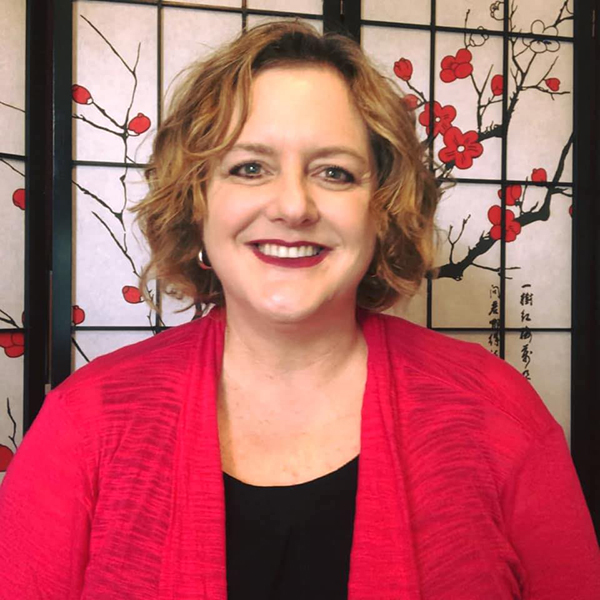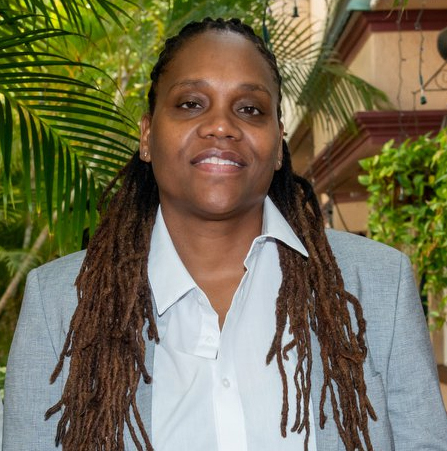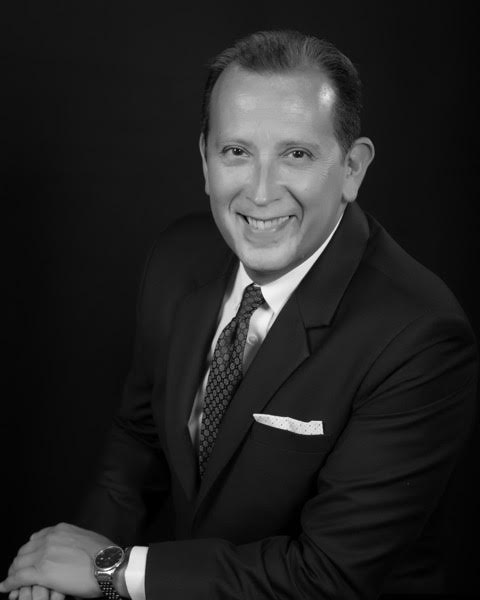Diversity and Inclusion Work for White Professionals in the Nonprofit Sector

There is a long-standing debate about whether the legendary Robinhood really stole from the rich and gave to the poor. Let's assume for our purposes that he did. Would that have made him a hero or a villain? A champion of the people or a thief? How a situation is characterized can vary wildly depending on who you ask and what their personal experiences have been. Life isn’t always stark black and white; the societal prism looks different from every angle and your view depends on where you’re standing. And I am one hundred percent sure that the view from inside the prism looking out is entirely different and is probably impossible to explain to those on the outside.
I think of this analogy when engaging in activities involving inclusion, diversity, equity, and access (IDEA) work in the nonprofit industry. Because I am a cisgender straight white female, there are mixed opinions on what it is appropriate for people like me to do in the IDEA arena. At times, it can be difficult to tell whether I should wade into a given situation; some say “use your platform” while others say “stay out of the way.”
In trying to figure it out, I definitely have made some big blundering mistakes along the way. Hopefully, I get it right more often than I get it wrong. After (foolishly, I can see now) delivering a full presentation on diversity and inclusion in nonprofits on my own at a conference in 2019, I’ve spent the last couple of years adjusting the way I engage in diversity and inclusion work.
Now I deliver co-presentations with BIPOC (Black, Indigenous, and People of Color) presenters. Or, depending on the audience that has asked me to speak, I often pass the lead to a talented nonprofit IDEA presenter who is a person of color, and I bow out. When I do present, I stick to the parts I know for sure, like why IDEA is important on nonprofits boards and staff, on executive teams, and with funders.
IDEA covers many types of diversity. For the purpose of this article, I am focusing on race specifically, but the concepts translate to all manner of diversity. I asked several trusted nonprofit friends and colleagues of color to give me their thoughts on the part that white nonprofit professionals can play in diversity and inclusion efforts.
Rafael Robles is a school foundation executive director in Florida, the vice president of the Diversity & Inclusion Committee at our local Association of Fundraising Professionals (AFP) chapter, and was previously a trainer on diversity, inclusion, and cultural competency at the University of Miami. When asked about white consultants and trainers in the diversity and inclusion space, here is what Rafael had to say, “I'm not against the ‘white trainer on IDEA’ per se, but if their life experience has been outside the realm of what they are presenting, then it becomes purely academic and not a lived experience, and that makes it unrelatable and foreign.”
This makes sense, and it is probably accurate to say that when I am involved in discussions on diversity and inclusion at a nonprofit organization, the part I contribute to the conversation is either research-based, anecdotal, or relating to organizational infrastructure as opposed to lived experience. So, I may not always be the best person to share the IDEA message. But if I am the only one there doing so at the time, so be it. We start where we are and grow from there.
BIPOC, White, or Both?
What about when there are only white people in the room? Because I am a white nonprofit trainer on fundraising and board governance, who has a strong dedication to diversity and inclusion, I’ve been asked several times by nonprofit professionals of color to talk with their boards of directors that are composed of all white trustees (usually almost all male). The thought process is that since I have both the platform (as a consultant/trainer) and common ground (being white) with the boards, it potentially increases the chance that they will listen to me.
Since my well-intentioned but ill-advised conference presentation in 2019, I have made the personal decision that, though I do talk about IDEA during the course of board assessments, training, and strategic planning, I won’t go into a boardroom with the sole purpose of talking about the importance of diversity and inclusion. As I mentioned earlier, I will co-present with a BIPOC presenter/consultant if they feel it would be useful. But if I were to take on such a conversation alone, it would basically create a situation where a room full of white people (including me) are discussing what we think people of color in nonprofits need. That would just be perpetuating the problem.
Now let’s hear what my other friend and colleague, Sebrena Pawley, had to say. Sebrena is the regional manager for an organization that works in young adult workforce services in New York. She is a national motivational speaker and is the founder of a start-up nonprofit called the I Was 16 Yesterday Wellness Center. Sebrena shared:
“Here’s what I’ve noticed. When something racist happens, whether systemic or systematic, it is almost always Black men and Black women that will automatically say, ‘we have to have a meeting or a workshop to address this.’ But this shouldn’t be our load to carry. The system can only change when white people acknowledge the need for change.
Black people are not obligated to teach even the most well-intentioned white people about race. They can if they want to, but the responsibility should rest solely on the white allies. It is not the responsibility of the oppressed to fix the oppressor.”
You can see that Rafael and Sebrena are coming at the same situation from different angles, sort of like the fractals of light that shoot off in different directions from the same prism. Neither is right or wrong; they’re just different. But given the disparate perspectives described above, it can sometimes be confusing to determine how much or little white professionals should engage in IDEA work.
What’s a White Nonprofit Professional to Do?
Enter Jim Taylor, vice president of Leadership Initiatives at BoardSource. I have been lucky enough to see Jim present on the topic of diversity and inclusion, and he is always willing to share his knowledge. I asked Jim his thoughts on whether/how white nonprofit professionals can best be involved in IDEA work. Jim’s response provided the thread that pulls all the ideas above together into sincere guidance that can help white allies navigate diversity and inclusion work with care and a measure of confidence.
“I think there are times when having white professionals be involved in presentations about diversity, equity, and inclusion (DEI) in nonprofits can be quite effective. For example, when a person of color addresses a predominantly white audience, there may be white people in the audience who would dismiss (or at least discount) a message about the importance of DEI from a person of color, but who would ‘hear’ the message differently and/or feel less defensive about the issue if they heard it from another white person. I also know (and have witnessed) the relief and ‘pleasant surprise’ people of color often feel when a white person speaks with passion and commitment about the importance of DEI (such as when a white nonprofit leader speaks genuinely about the learnings from their organization’s racial equity journey); this work can be burdensome for people of color, so having white allies who can deliver DEI messaging genuinely and authentically is often welcomed.
But I would add this caution for white professionals that are doing DEI presentations: it’s important to acknowledge the things that you do not (and cannot know) from a DEI perspective, such as the “lived experience” of what it’s like to be a person of color in our society. That’s why I would encourage white professionals to recognize situations in which they may not be well-suited to be the presenters, or when being a co-presenter with a person of color who is also a DEI professional would be the most appropriate course of action. These are the ways in which white professionals can be most respectful to the issue of DEI and to people of color regarding this issue.”
Do Your Best
Each situation we encounter may be a bit different. The people involved or watching from the sidelines may react in ways we didn’t expect. For me, some of the ways I do my best are to learn by reading and listening, trying to be self-aware enough to evaluate situations to determine whether or not I can play a useful part, and stepping aside at the right times. My attempts are sometimes clumsy, and I know I cannot promise perfection in my choices or actions. That is why I am grateful to have Jim’s guidance that can be used as a sort of filter that I can mentally overlay on a given situation to help guide my decisions.
If we serve on or work with a board that has no trustees that are BIPOC, LGBTQ+, or that identify with another form of diversity, then we must start the conversation where we are; start by making the case for why that board needs to change. And we must be prepared for the fact that some of our white colleagues don’t want to have the conversation at all and may react negatively. It is easy to be satisfied with the status quo when you are the group that benefits the most. It is harder to get people to voluntarily make room for others.
If you aren’t the person leading the conversation at your nonprofit, but you are involved in the conversation (and you are white), one important thing you can do is to focus your efforts on not being defensive. Remind yourself and others that diversifying is not about taking something from the people who’ve always been “in charge”. It is about making the environment and mission delivery better for everyone by expanding who is involved in the process at every level. More talent and a wider array of perspectives lead to more effective outcomes and impact.
We use whatever platform we have (like this article). At times we can give up that platform and let someone else take it for a while (like when celebrities let activists “take over” their TikTok account for a day). Or we can share it (like co-publishing research or tag-teaming presentations). Sometimes it is best to pass the microphone to someone more suited to handle a specific situation. Unlike the piece of wood Rose was floating on in Titanic … there actually is room for all of us. We just have to be willing.
Here are a few books that have recently helped me broaden my horizons:
1. “How to Be an Antiracist” by Dr. Ibram X. Kendi
2. “Decolonizing Wealth” by Edgar Villanueva
3. “Systems Thinking for Social Change” by David Peter Stroh
4. “Professional Troublemaker” by Luvvie Ajayi Jones
Editor's Note: The opening paragraph was revised on Sept. 23, 2021 to remove a reference made to terrorists.


 Tracy Vanderneck, MSM, CFRE, is president of
Tracy Vanderneck, MSM, CFRE, is president of  Sebrena Pawley has dedicated thirty-five years to serving young adults and helping them define their own futures. Sebrena is currently the regional manager for Eckerd Connects Youth Workforce Development. Her work centers in the Bronx and surrounding areas. She is an award-winning, nationally known motivational speaker and is the founder of the startup nonprofit organization I Was Sixteen Yesterday Wellness Center, an organization created to offer wrap-around services to young adults in the Bronx and Harlem.
Sebrena Pawley has dedicated thirty-five years to serving young adults and helping them define their own futures. Sebrena is currently the regional manager for Eckerd Connects Youth Workforce Development. Her work centers in the Bronx and surrounding areas. She is an award-winning, nationally known motivational speaker and is the founder of the startup nonprofit organization I Was Sixteen Yesterday Wellness Center, an organization created to offer wrap-around services to young adults in the Bronx and Harlem.  Rafael E. Robles is a native of Bogotá, Colombia, and grew up in New Jersey. With more than 25 years of experience in higher education and fundraising, Robles has held the positions of chief philanthropy officer, advancement director, and major gifts officer. He worked at the University of Miami as a master teacher, corporate education and strategic initiatives director, and study abroad adviser. Now, he holds the charge of executive director of the Sarasota Military Academy Foundation.
Rafael E. Robles is a native of Bogotá, Colombia, and grew up in New Jersey. With more than 25 years of experience in higher education and fundraising, Robles has held the positions of chief philanthropy officer, advancement director, and major gifts officer. He worked at the University of Miami as a master teacher, corporate education and strategic initiatives director, and study abroad adviser. Now, he holds the charge of executive director of the Sarasota Military Academy Foundation.  Jim Taylor, MBA, is the vice president of leadership initiatives at BoardSource. In this role, Jim focuses on leading BoardSource’s efforts to position nonprofit boards for stronger leadership on diversity, inclusion, and equity. This includes leading the organization’s work to spark and support understanding, action, and change at the board level on these issues; serving as an external representative, speaker, and writer; developing new resources and programming; and partnering with peer organizations around the country. Prior to joining BoardSource in December 2018, Jim held several leadership roles in community development and diversity, inclusion, and equity.
Jim Taylor, MBA, is the vice president of leadership initiatives at BoardSource. In this role, Jim focuses on leading BoardSource’s efforts to position nonprofit boards for stronger leadership on diversity, inclusion, and equity. This includes leading the organization’s work to spark and support understanding, action, and change at the board level on these issues; serving as an external representative, speaker, and writer; developing new resources and programming; and partnering with peer organizations around the country. Prior to joining BoardSource in December 2018, Jim held several leadership roles in community development and diversity, inclusion, and equity. 

